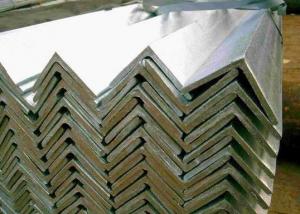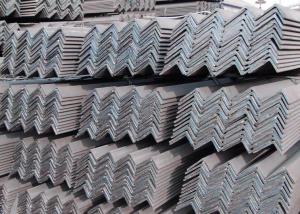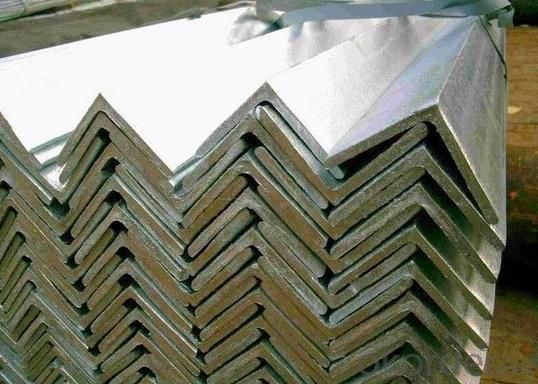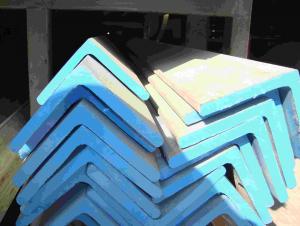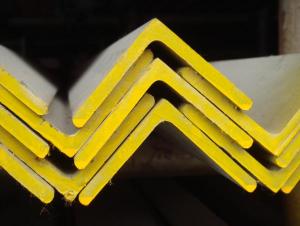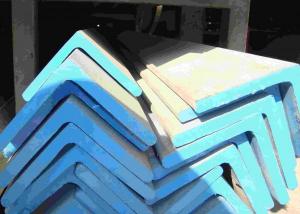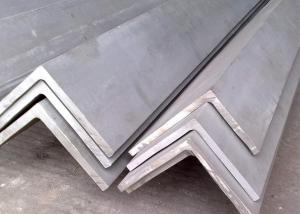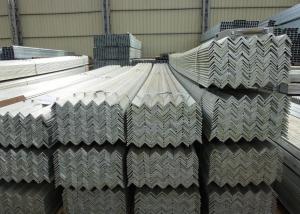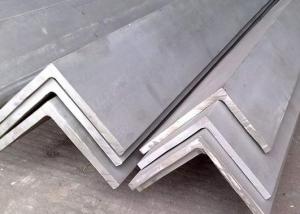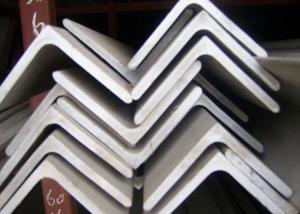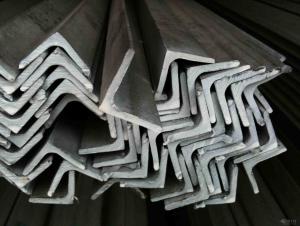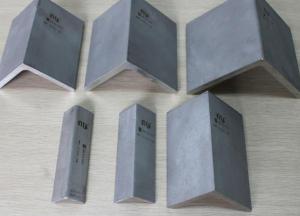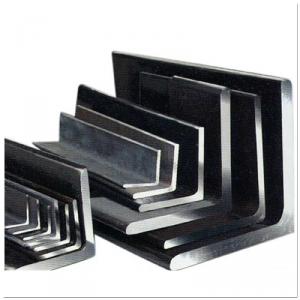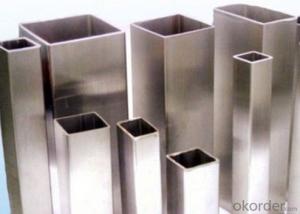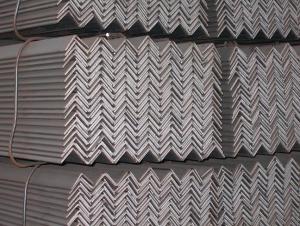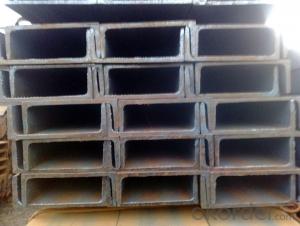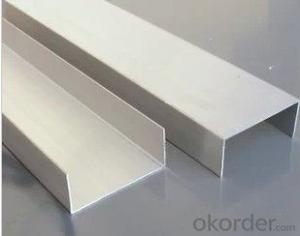Stainless Steel Angles
- Loading Port:
- China Main Port
- Payment Terms:
- TT or LC
- Min Order Qty:
- 1 Ton m.t.
- Supply Capability:
- 2000 Tons Per Month m.t./month
OKorder Service Pledge
OKorder Financial Service
You Might Also Like
Stainless Steel Angles
1.Grade: SS200,300,400 series
2.Size: 25×25×3 mm-100×100×10mm
3.Process: HRAP
4. Length: 2-6m
5. Shape: Equal
6. Delivery: within 20 days
7. MOQ: 1 ton
8. Certificate: ISO 9001:2008, SGS
9. Package:Standard Export Packing, or put into wooden boxes according to your
requirement
10. Application: Construction, Marine, Industry and so on
|
Name |
Stainless Steel Angles | ||||||
|
Standard |
ASTM A554, A312, A249, A269 and A270 | ||||||
|
Material Grade |
304,316,201,202, 316L,430 | ||||||
|
Length |
6m or as customers' request | ||||||
|
Tolerance |
a) thickness: +/-0. 15mm | ||||||
|
| |||||||
|
b) Length:+/-4. 5mm - 0mm | |||||||
|
Surface |
180G, 320G, 400G Satin / Hairline(Matt Finish, Brush, Dull Finish) 400G, 500G, 600G or 800G Mirror finish | ||||||
|
Application |
Decoration construction, upholstery, industry instruments | ||||||
|
Test |
Squash test, Extended test, Water pressure test, Crystal rot test, Heat treatment, NDT | ||||||
|
Chemical Composition of Material |
Composition
Material |
201 |
202 |
304 |
316L |
430 | |
|
C |
≤0.15 |
≤0.15 |
≤0.08 |
≤0.08 |
≤0.12 | ||
|
Si |
≤1.00 |
≤1.00 |
≤1.00 |
≤1.00 |
≤1.00 | ||
|
Mn |
5.5-7.5 |
7.5-10 |
≤2.00 |
≤2.00 |
≤1.00 | ||
|
P |
≤0.06 |
≤0.06 |
≤0.045 |
≤0.045 |
≤0.040 | ||
|
S |
≤0.03 |
≤0.03 |
≤0.030 |
≤0.030 |
≤0.030 | ||
|
Cr |
16-18 |
17-19 |
18-20 |
16-18 |
16-18 | ||
|
Ni |
3.5-5.5 |
4-6 |
8-10.5 |
10-14 |
| ||
|
Mo |
|
|
|
2.0-3.0 |
| ||
|
Mechanical Property |
Material Item |
201 |
202 |
304 |
316L | ||
|
Tensile Strength |
≥535 |
≥520 |
≥520 |
≥520 | |||
|
Yield Strength |
≥245 |
≥205 |
≥205 |
≥205 | |||
|
Extension |
≥30% |
≥30% |
≥35% |
≥35% | |||
|
Hardness (HV) |
<253 |
<253 |
<200 |
<200 | |||
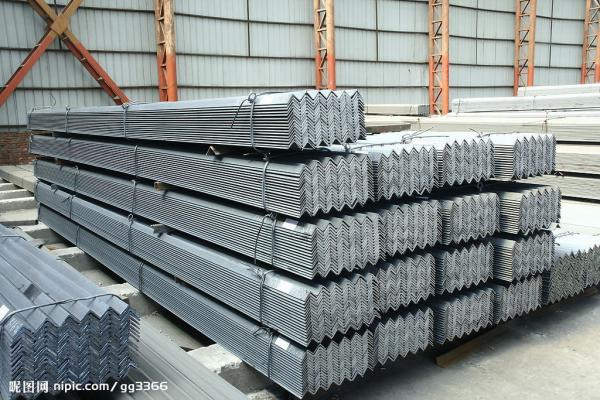
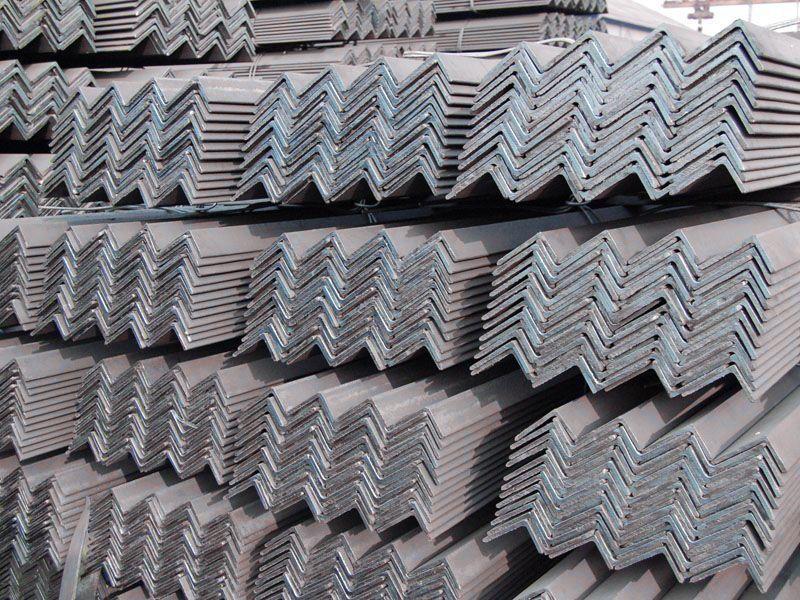
- Q: Can stainless steel angles be galvanized?
- No, stainless steel angles cannot be galvanized. Galvanizing is a process of applying a protective zinc coating onto steel to prevent corrosion. Stainless steel, on the other hand, is already corrosion-resistant due to its high chromium content. Therefore, galvanizing is unnecessary for stainless steel angles as they are already designed to resist rust and corrosion.
- Q: How do I calculate the weight of a stainless steel angle?
- To calculate the weight of a stainless steel angle, you need to know the dimensions of the angle and the density of stainless steel. First, measure the length, width, and thickness of the angle. These dimensions will be represented in inches or millimeters. Next, find the density of stainless steel. The density of stainless steel varies depending on the specific type, but on average, it is around 8 grams per cubic centimeter or 8000 kilograms per cubic meter. To calculate the volume of the stainless steel angle, multiply the length, width, and thickness together. If your dimensions are in inches, convert them to centimeters by multiplying by 2.54. If your dimensions are in millimeters, divide by 10 to get centimeters. Next, convert the volume to cubic meters by dividing by 1,000,000 if your dimensions are in centimeters. If your dimensions are already in meters, you can skip this step. Finally, multiply the volume by the density to get the weight of the stainless steel angle. Make sure the units are consistent - if your density is in kilograms per cubic meter and your volume is in cubic meters, the resulting weight will be in kilograms. If you used grams per cubic centimeter for density, the weight will be in grams. For example, let's say you have a stainless steel angle with dimensions of 10 inches length, 2 inches width, and 0.5 inches thickness. First, convert the dimensions to centimeters: 10 inches = 25.4 cm, 2 inches = 5.08 cm, 0.5 inches = 1.27 cm. Next, calculate the volume: 25.4 cm x 5.08 cm x 1.27 cm = 162.9 cm³. Since the density of stainless steel is approximately 8000 kg/m³, divide the volume by 1,000,000 to get cubic meters: 162.9 cm³ / 1,000,000 = 0.0001629 m³. Finally, multiply the volume by the density: 0.0001629 m³ x 8000 kg/m³ ≈ 1.3032 kg. Therefore, the weight of the stainless steel angle is approximately 1.3032 kilograms.
- Q: Are stainless steel angles resistant to impact?
- Yes, stainless steel angles are resistant to impact. Stainless steel is known for its high strength and durability, which makes it highly resistant to impact. Its composition, which includes chromium and nickel, provides excellent corrosion resistance and toughness. This makes stainless steel angles suitable for various applications where impact resistance is crucial, such as in construction, manufacturing, and automotive industries. Additionally, stainless steel angles can withstand heavy loads and extreme weather conditions, further enhancing their impact resistance.
- Q: Can stainless steel angles be used in mining applications?
- Yes, stainless steel angles can be used in mining applications. Stainless steel is known for its durability, corrosion resistance, and strength, making it suitable for the harsh and demanding conditions of mining operations. Stainless steel angles can be used for various purposes in mining, such as support structures, conveyor systems, and equipment frames.
- Q: Can stainless steel angles be used for conveyor systems?
- Yes, stainless steel angles can be used for conveyor systems. Stainless steel is known for its durability, resistance to corrosion, and high strength, making it an excellent choice for conveyor systems that require reliable and long-lasting performance. Stainless steel angles can provide structural support and stability to conveyor belts, ensuring smooth and efficient movement of materials.
- Q: What are the fire resistance properties of stainless steel angles?
- Stainless steel angles possess excellent fire resistance properties due to their composition and structural characteristics. Stainless steel is an alloy that contains a high percentage of chromium, which forms a thin, protective layer of chromium oxide on the surface of the metal when exposed to oxygen. This passive layer acts as a barrier, preventing further oxidation and corrosion. In terms of fire resistance, stainless steel angles have several advantages. Firstly, they have a high melting point, typically around 1400-1450°C (2552-2642°F), which makes them capable of withstanding intense heat for prolonged periods without losing their structural integrity. This property is crucial in fire situations where materials need to maintain their strength to support structural elements. Secondly, stainless steel angles have low thermal conductivity, meaning they do not readily transfer heat. This characteristic helps to minimize the spread of fire and reduces the risk of structural failure due to heat transfer. Additionally, stainless steel does not emit toxic gases or smoke when exposed to fire, making it a safer option in terms of human health and environmental impact. Furthermore, stainless steel angles exhibit excellent corrosion resistance even at high temperatures, which further enhances their fire resistance properties. This resistance to corrosion ensures that the structural integrity of stainless steel angles will not be compromised, even when exposed to fire and the associated heat and moisture. Overall, stainless steel angles are highly desirable for fire-resistant applications, such as in the construction of buildings, infrastructure, and industrial facilities. Their ability to withstand high temperatures, low thermal conductivity, and corrosion resistance make them a reliable and durable choice in fire-prone environments.
- Q: Can stainless steel angles be used in architectural projects?
- Yes, stainless steel angles are commonly used in architectural projects. They are highly durable, corrosion-resistant, and have an aesthetically pleasing appearance, making them suitable for various applications such as structural support, cladding, decorative elements, and handrails.
- Q: Can stainless steel angles be used in oil refineries?
- Yes, stainless steel angles can be used in oil refineries. Stainless steel is highly resistant to corrosion and can withstand the harsh and corrosive environments found in oil refineries. It offers excellent strength and durability, making it suitable for various applications within the industry, including structural support, equipment fabrication, and piping systems.
- Q: How do stainless steel angles contribute to the overall safety of a product?
- Stainless steel angles contribute to the overall safety of a product by providing structural support and stability. They are commonly used in construction and manufacturing industries to reinforce and strengthen various components, ensuring that the product can withstand heavy loads and resist deformation or collapse. The corrosion-resistant properties of stainless steel angles also help to prevent rust and deterioration, prolonging the lifespan of the product and reducing the risk of structural failure.
- Q: Can stainless steel angles be used for pedestrian bridges?
- Yes, stainless steel angles can be used for pedestrian bridges. Stainless steel is a strong and durable material that offers excellent resistance to corrosion, making it suitable for outdoor applications. Additionally, stainless steel angles provide structural support and can be easily fabricated to meet the specific design requirements of pedestrian bridges.
1. Manufacturer Overview
| Location | Zhejiang, China |
| Year Established | 2010 |
| Annual Output Value | above US$16 million |
| Main Markets | East Asia, Middle East. |
| Company Certifications |
2. Manufacturer Certificates
| a) Certification Name | |
| Range | |
| Reference | |
| Validity Period |
3. Manufacturer Capability
| a) Trade Capacity | |
| Nearest Port | Shanghai |
| Export Percentage | |
| No.of Employees in Trade Department | above 10 people |
| Language Spoken: | English, Chinese |
| b) Factory Information | |
| Factory Size: | about 30000 square meter |
| No. of Production Lines | above 7 |
| Contract Manufacturing | OEM Service Offered |
| Product Price Range | Average |
Send your message to us
Stainless Steel Angles
- Loading Port:
- China Main Port
- Payment Terms:
- TT or LC
- Min Order Qty:
- 1 Ton m.t.
- Supply Capability:
- 2000 Tons Per Month m.t./month
OKorder Service Pledge
OKorder Financial Service
Similar products
Hot products
Hot Searches
Related keywords
